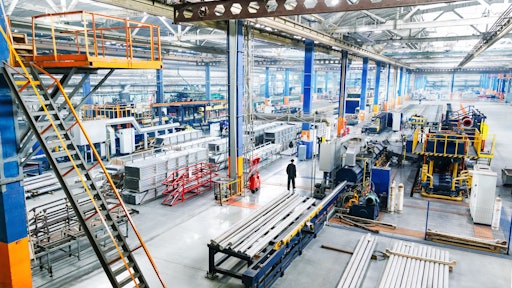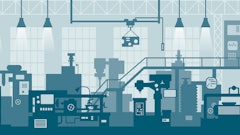
The world has faced a number of economic and humanitarian challenges over the past several years: pandemic, disrupted supply chains, trade tensions, war, and inflation. For leaders, it’s a complex and changing environment against which to design a strategy and plan for sustained growth.
As the market shifts in 2023, companies are developing products to adapt, which in turn affects how they work alongside their manufacturing suppliers. Each stakeholder—consumer, manufacturer, supplier—is connected to and influenced by the other. Today’s purchase decisions are driving the decisions made on the factory floor. So, to truly assess what's next for the manufacturing industry, you have to look at the evolving landscape in the marketplace and how companies are adjusting the way they develop products and work with suppliers.
Let’s first look at a few macrotrends influencing the market and changing how we do business.
Fending Off Inflation
The most notable large-scale economic trend is the current inflation rate that is driving up the cost of goods and services. According to the U.S. Labor Department, inflation has risen from 1.4% in 2020 to nearly 5% today. And while the Congressional Budget Office estimates inflation to dip below 4% by end of 2023, that rate is still well above what is considered sustainable. High inflation affects everyone including consumers, companies, and their suppliers—it also affects how innovation is done.
Companies developing products and services are scrambling to tackle challenges that have risen with inflation. They need to look for ways to accelerate product development while reducing costs so they can remain competitive in a market that demands perpetual innovation. It’s often a balancing act for companies as they juggle increasing labor costs while attracting new talent to ensure they have the best team to drive continued innovation.
Even with the right teams in place, companies still need to develop new ways to insert value like speed and cost-efficiencies into their product development cycles and supply chains. From launching a satellite into orbit to leading the charge on new electric and autonomous vehicle development to designing next-gen smartphone tech, the very nature of inflation makes it more difficult to extract value and push innovation across industries. It’s undoubtedly a lofty task for companies, but one that is often aided by support from their manufacturing supplier.
Supply Chain Resilience
We all know the disruptions that supply chains have seen over the past few years. The question we’re left with now is how do we restore resilience into supply chains?
A Protolabs report found a handful of strategic approaches centered around automation, geographical diversification, agile processes, supply chain monitoring and balancing inventory.
- Software and hardware automation—from online buying experiences to factory floor production—is key to unlocking resilience to supply chain shocks and driving productivity and efficiency at companies and their suppliers. With the rise of industrial internet of things (IIoT) models, automation is more prevalent than ever and can help companies reduce fixed costs and be more adaptive to changing inputs.
- Geographic diversification and onshoring builds a safety net into supply chains. According to the report, nearly 44% of participants cited local sourcing as the most effective way to tackle future supply chain disruptions.
- Just-in-time manufacturing paired with predictive forecasting to determine accurate reserve inventories brings balance to supply strategies. It allows companies to still implement lean tactics that leverage on-demand production but use data-driven AI models to help determine proper minimum order quantities and avoid disruption in case of crisis.
In the end, resilience really means responding to disruptions with accelerated development and market launches, more products on shelves, and a reduction in consumer friction.
Dissecting the Manufacturing Ecosystem
It’s obvious our market is in a much different place than it was even a few years ago. Manufacturers must adapt to market transformation along with consumers and the suppliers supporting them. What could this look like?
On the traditional side, we know there will always be a role for smaller, independent manufacturing shops that often focus on specialized services, industries, or material types. The same goes for high-volume production providers that can bring lower costs at higher volumes and elevated levels of quality control.
The opportunity for our industry to better respond to the trends of today is rooted in the evolution of digital manufacturing and its role as a supply chain solution.
Over the last few decades, digital manufacturers have essentially used one of two models: The first is centered around factories that have adopted digital manufacturing processes and automation. Many manufacturers are on this transformation journey today and are working to integrate digital in its many forms (e.g., digital twins, machine learning, 3D printing) into their operations. For those that can integrate digital technologies end-to-end, speed becomes part of their DNA. The other model is the online marketplace that leverages suppliers around the world. This model brings benefits like expanded capabilities, higher part volumes, and improved pricing.
The popularity of these two models are driven by advanced technology, automation, and an e-commerce buying experiences. But the question that has become more prominent over the last few years is: Where do we see the transformation of digital manufacturing to build more resilient supply chains?
Both factory and network models thrive on digitalization and a thread that serves as the connective tissue between front-end software and back-end hardware. It’s Software as a Service (SaaS) technology driving quoting, manufacturability analysis, CAD preparation, and ordering, which is tethered to part production, quality control, finishing, and shipping—Manufacturing as a Service (MaaS). It’s a complex, technology-enabled process that provides speed, accuracy, and transparency at every point.
Because of these shared characteristics, it is a natural fit to blend these two models and offer a seamless experience. Our industry has always siloed digital factories and online marketplaces, two models working exclusively to bring a unique set of benefits to companies. Let’s combine the two to form a new shared digital manufacturing model that blends the best of both models to offer a one-stop supply chain solution that companies can turn to throughout the product lifecycle.
Through examples, what we see as the future of manufacturing tailored to product developer and buyer needs and engineered for our current economy. It’s a new business model, an offspring of Industry 4.0 thinking, a representation of an evolving manufacturing industry. This new framework allows our industry to better weather market trends such as inflation and supply chain disruptions so innovation can continue to thrive.


























